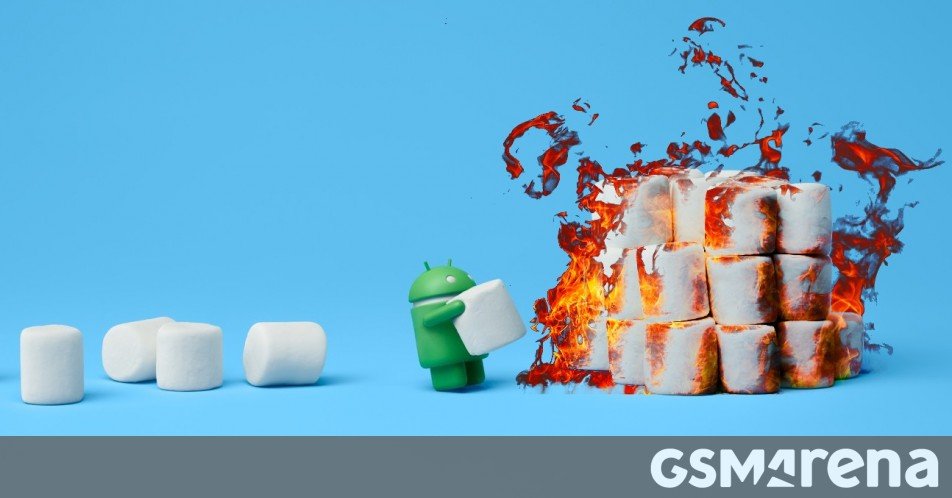Maybe you’ve heard that with Android 14 you can no longer install old apps that were built for Lollipop. Soon Android 15 will arrive and will similarly block apps meant for Marshmallow. Let’s hold back the tears as we wave goodbye to one of the best Android versions in history and some of the best apps and games that will go in the great robotic baker in the sky.
Android 6.0 Marshmallow was introduced nearly a decade ago on May 28 2015 at that year’s Google I/O. A beta was released the same day and the stable version arrived in September on Nexus phones and tablets first. In November it made its first appearance in the OS version distribution charts – back then Android 4.4 KitKat was still king and Lollipop was just breaking above the 20% share mark.

Version 6.0 brought features that we now take for granted. For example, it introduced native USB-C support, which is now the industry standard (after a certain holdout finally gave in).
Another major addition was fingerprint reader support. This replaced the simple pattern locks with a more secure system, which handled not just unlocking your phone, but also keeping your money safe inside Android Pay (this turned into Google Pay then Wallet).

Android 6.0 brought native support for fingerprint readers
The theme of security continues with the new permission model. Previously, it was all or nothing – apps required access to certain functions of your phone and your only real choice was whether to install the app or not. With Marshmallow, you would be asked the first time that an app tries to do something – access your files? Location? Microphone? You could just tap “no” and the app had to deal with it.

Marshmallow introduced a permission system for apps
Android 6.0 also introduced new mechanisms to extend battery life. Doze was a new sleep state that changed how much apps can do depending on whether you are physically handling the phone or not. If the phone is in your hand, apps need to be responsive. If the phone is sitting idle on your nightstand, apps were throttled down and only high priority events could go through.
Doze limited background activity and network access for apps. Things like messengers would be adversely affected by this, but they could ask permission to remain active even when the rest of the phone dozes off.

There was an even deeper sleep state, App Standby. Android doesn’t really have a clear distinction between which apps are running and which are not, at least not in the way Windows, Linux and macOS do. This means that an app can reduce battery life even if you are not actively using it. With version 6.0, rarely used apps could be put on standby that limits their abilities even further. Interacting with the app automatically brings it back to an active state, so if everything works as intended, you wouldn’t even notice that an app was in standby mode.
Flex Storage was a big change that was subsequently undone. It gave you the option to format a microSD card as part of the internal storage. This means that you could no longer hot-swap it, but this removed some of the barriers around external storage. You could choose to move data to the microSD, freeing up internal storage. Only parts of a given app would be moved, but those were usually the biggest parts – i.e. game code stays on the fast internal storage, game assets (graphics, audio, etc.) could go on the large external storage.
These days we have things like the A2 rating for cards, which guarantee a minimum transfer and IOPS speed to make them usable as app storage. But how many phones still have a microSD slot? And Android versions that came after Marshmallow basically killed off Flex Storage anyway.
Moving on, Android 6.0 introduced “contextual assistants”. Remember Google Now on Tap? That’s what a contextual assistant is (“AI” wasn’t as big of a buzzword back in 2015). The context can be anything – a photo, a song, an email, etc. and you would get relevant information and quick access to actions like search, navigation, sharing, social media and so on.

Google Now on Tap surfaced context-sensitive info and actions
While the Nexus devices were first to get Android 6.0 Marshmallow, other makers were quick to start announcing updates for select models from their lineup. Looking back at OS version distributions, Marshmallow passed the 1% mark in early 2016 and became the top version in June 2017. It would never go far above the 30% mark as Nougat came around and things started shifting towards version 7.

By the way, there is a way to sneak in an older app, but you will need to sideload it using ADB. We don’t think many will go through the trouble. This means that apps that were last updated in the Marshmallow era will no longer be accessible for essentially all Android users.
Do you have an old apps that you still use? Any old games that you still love?

